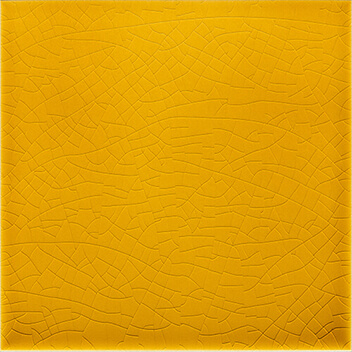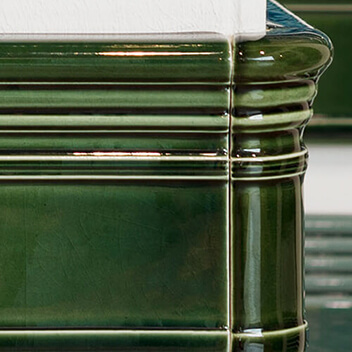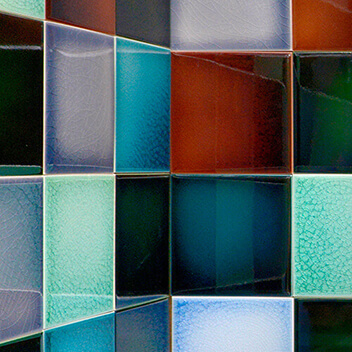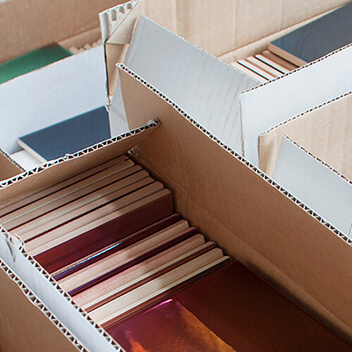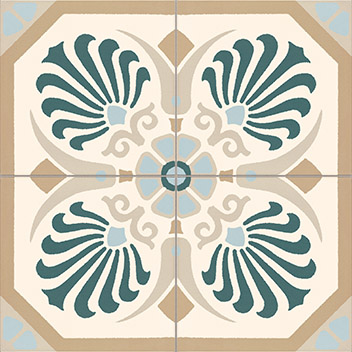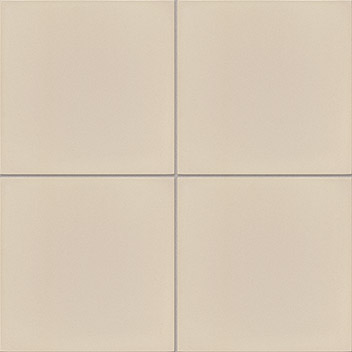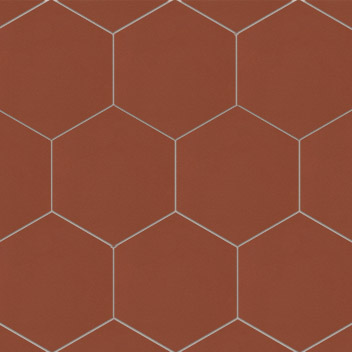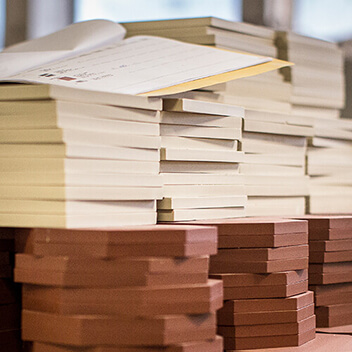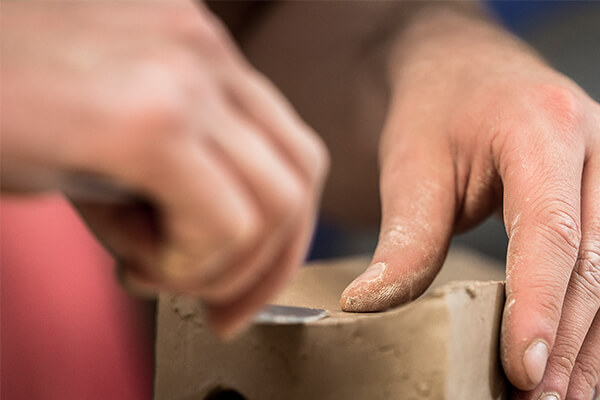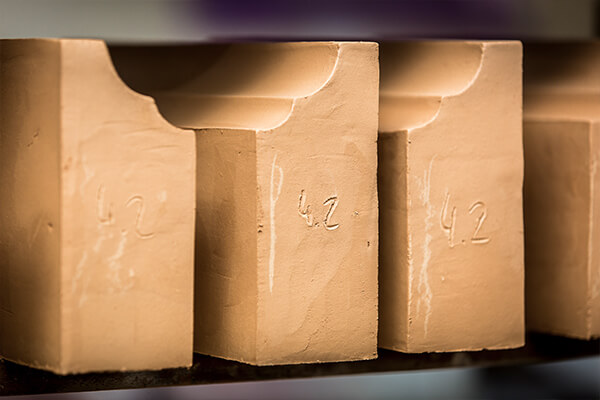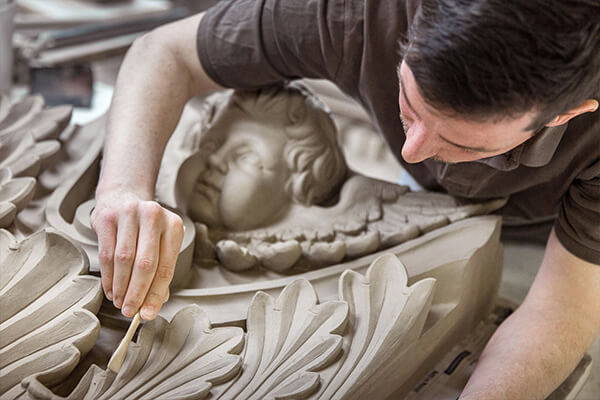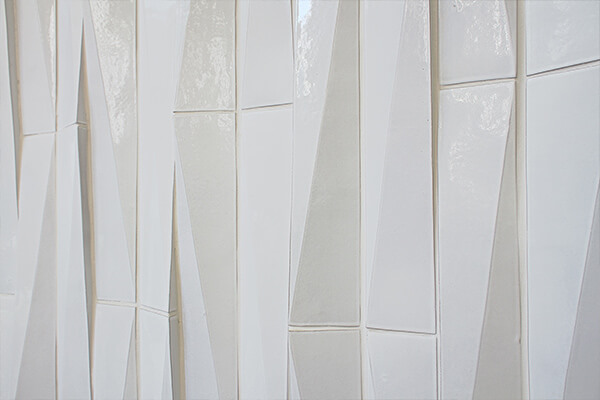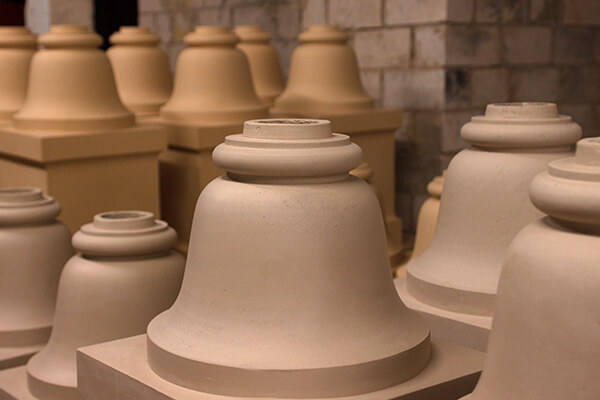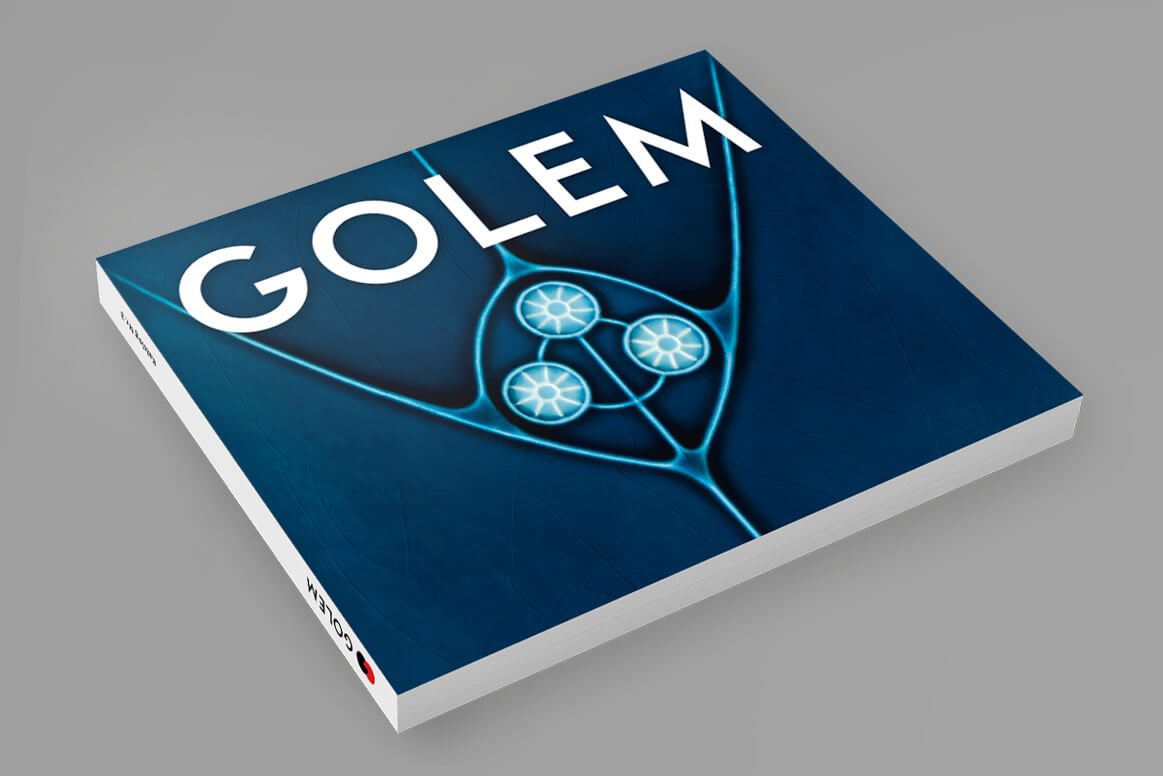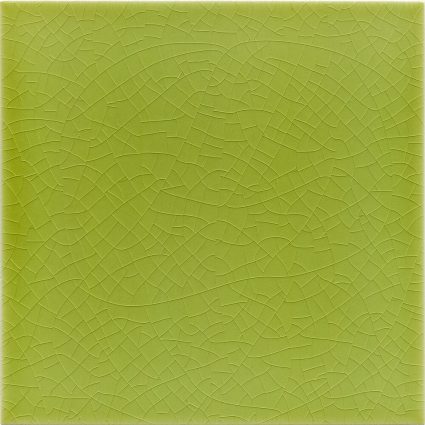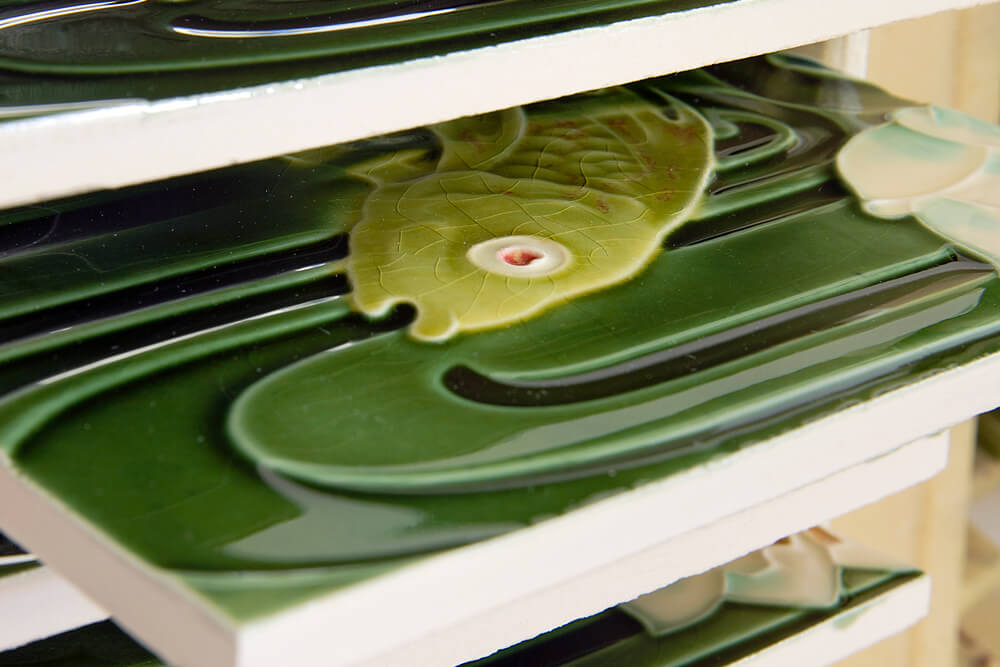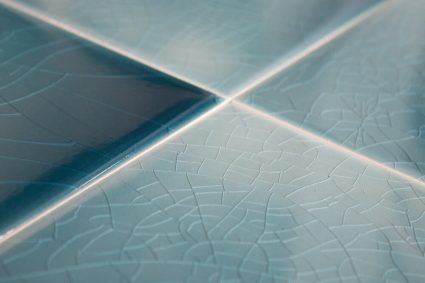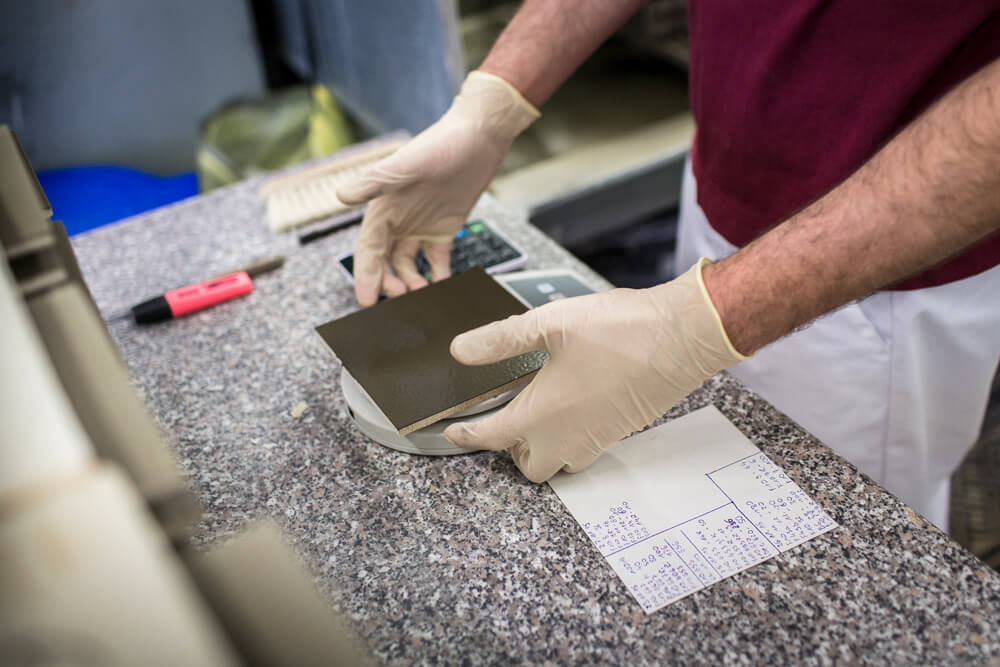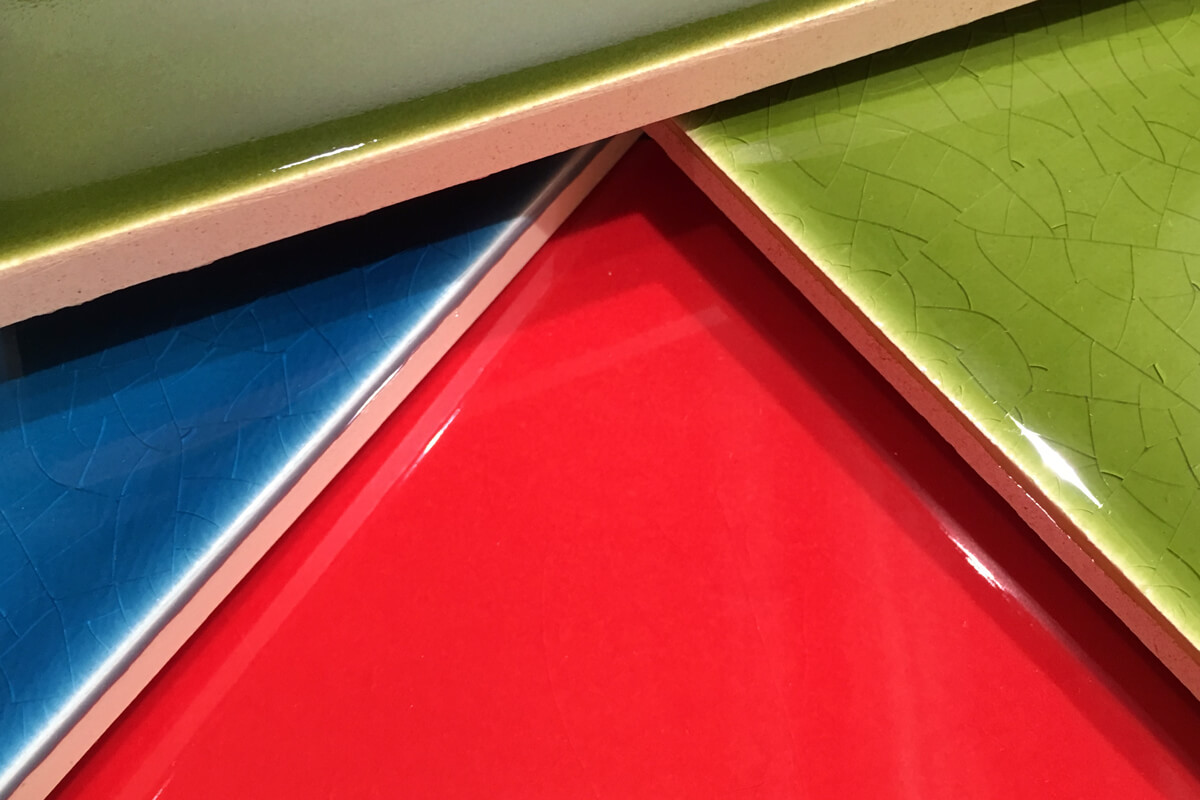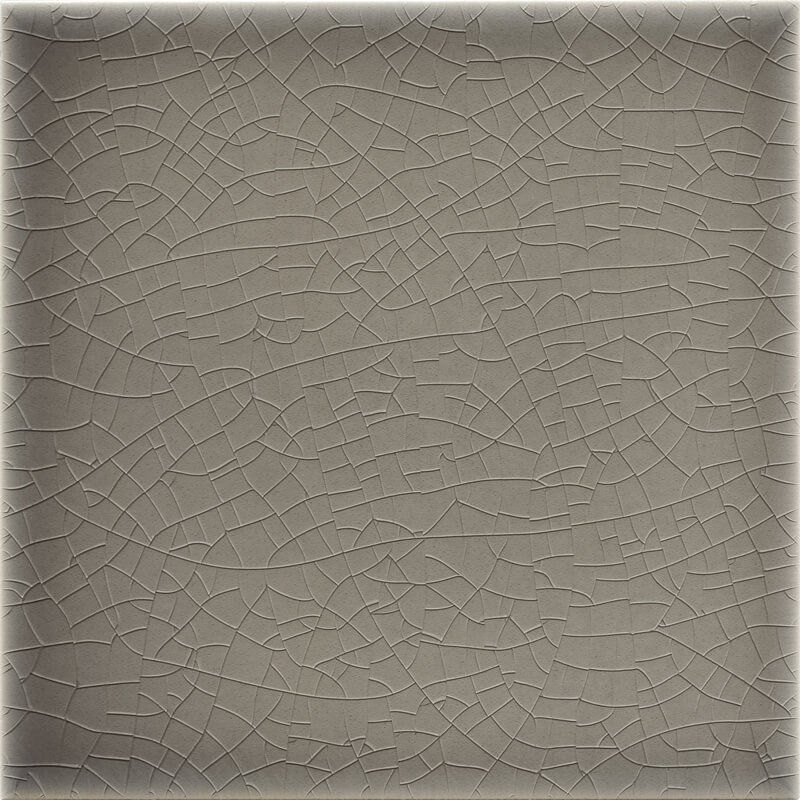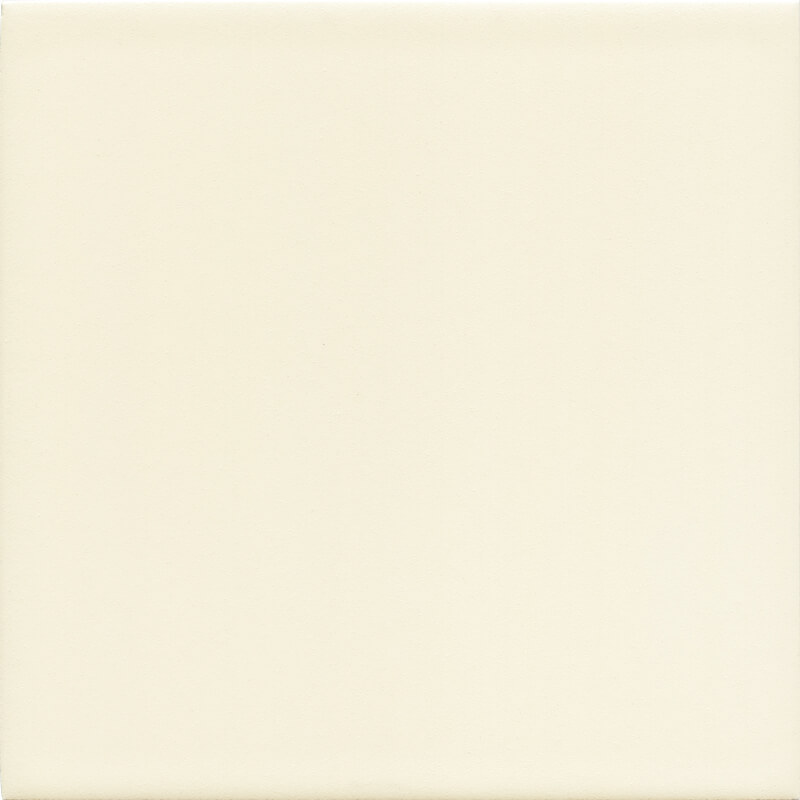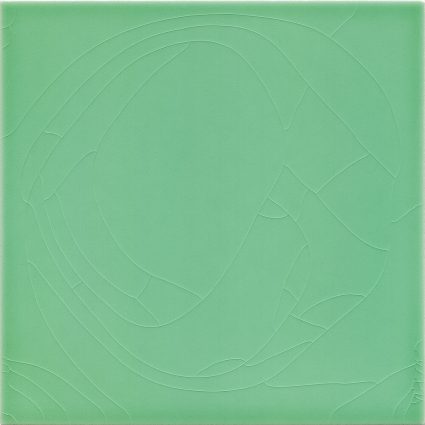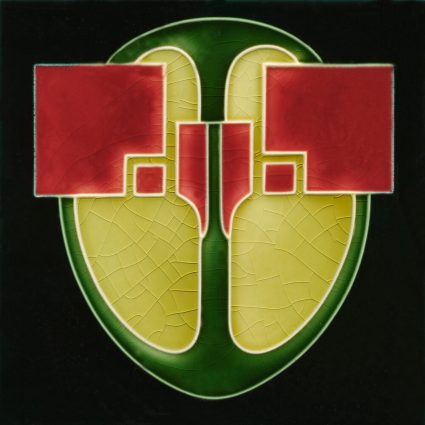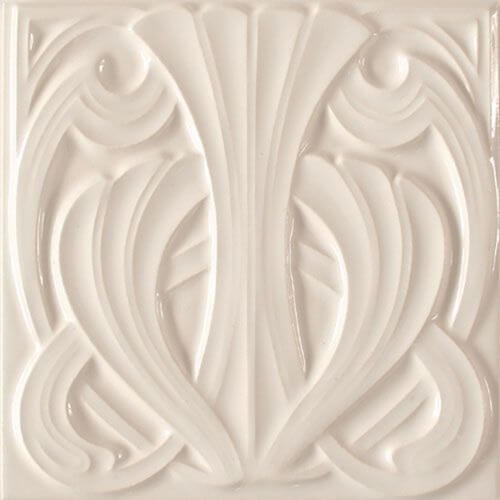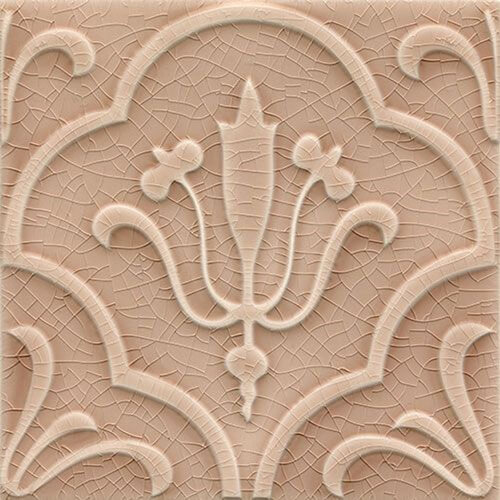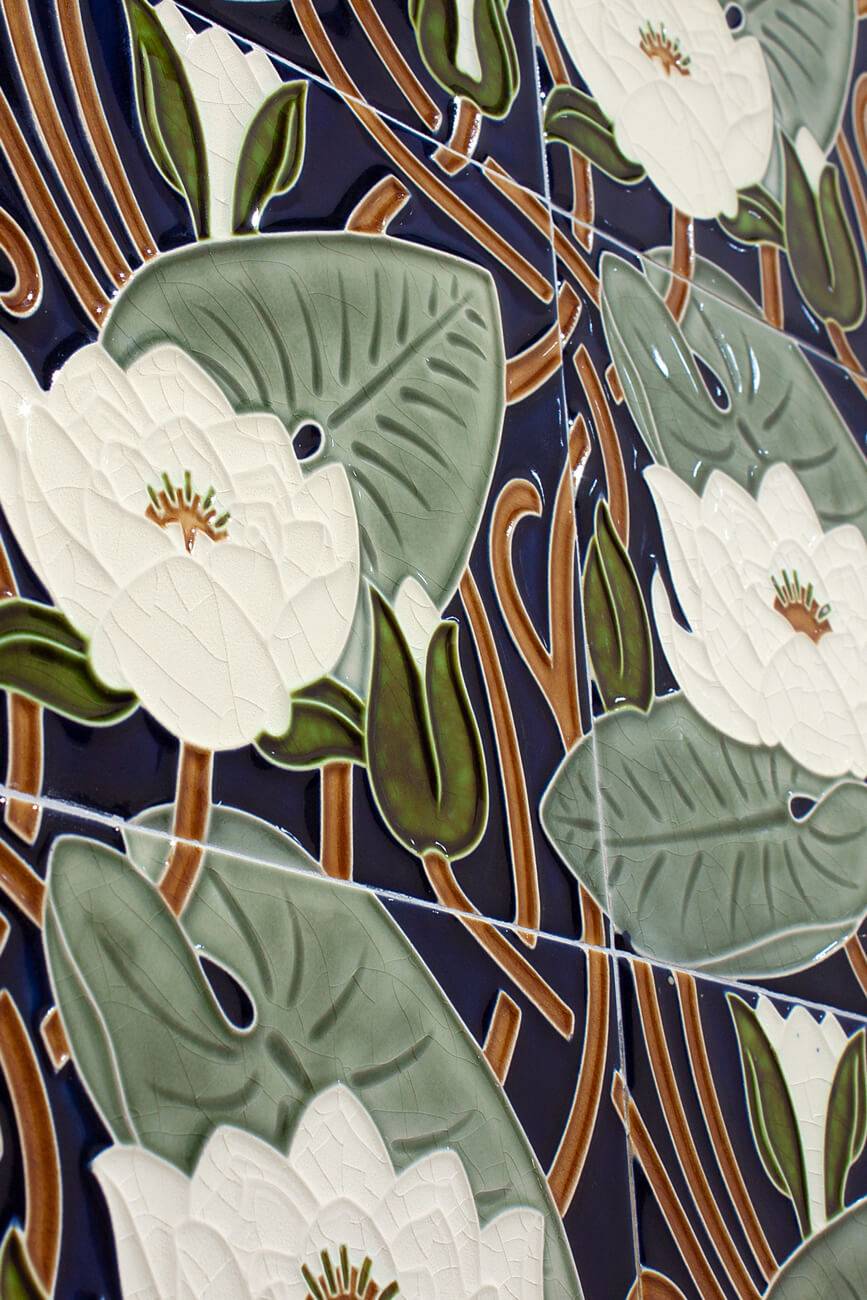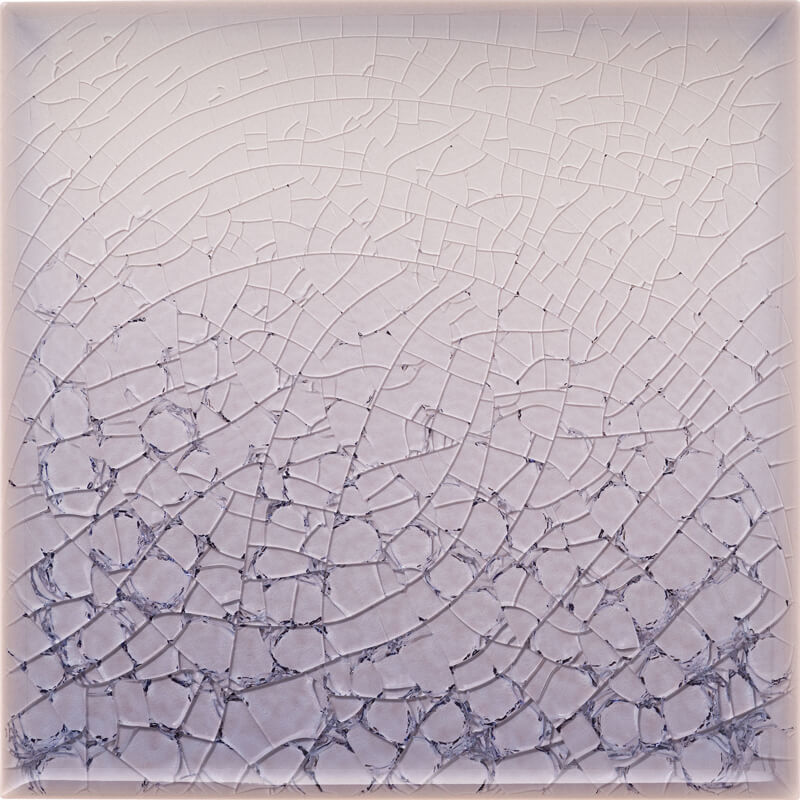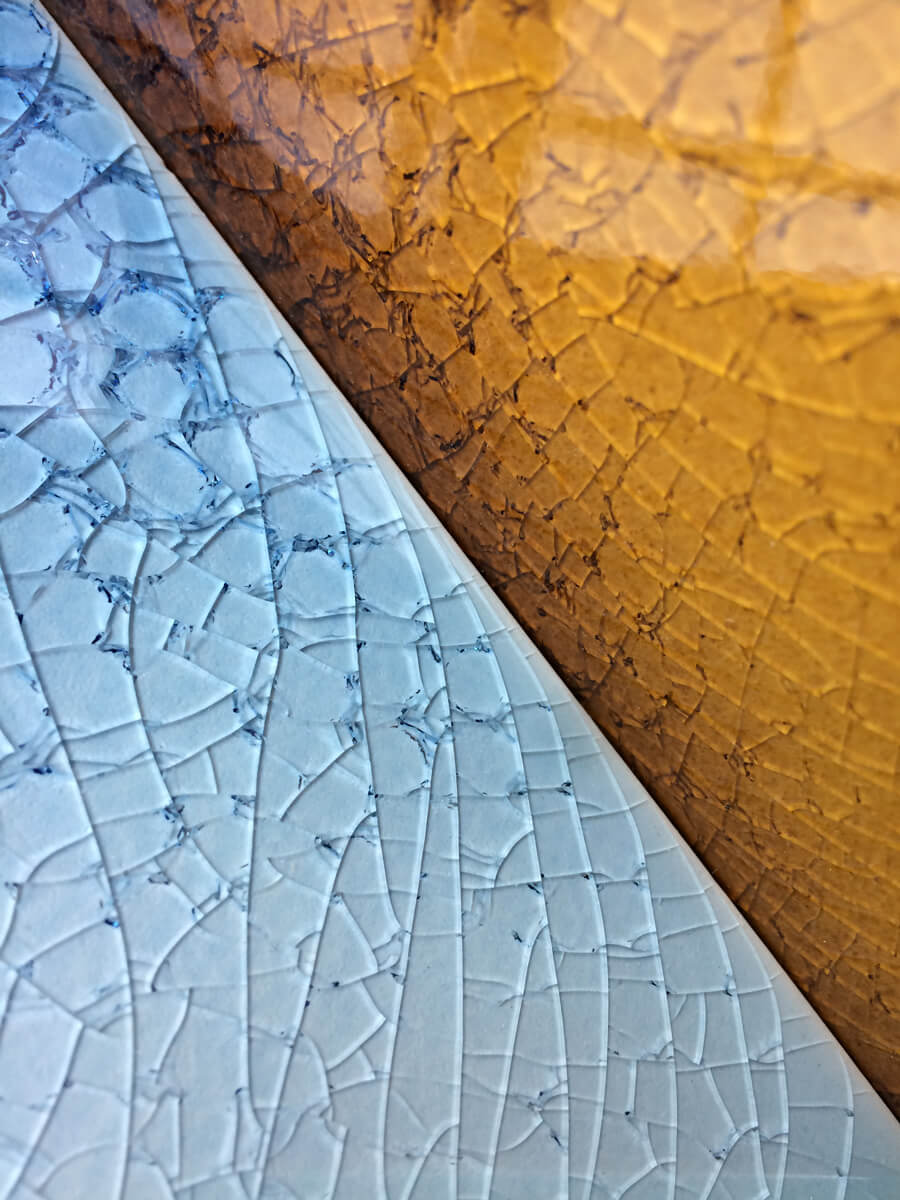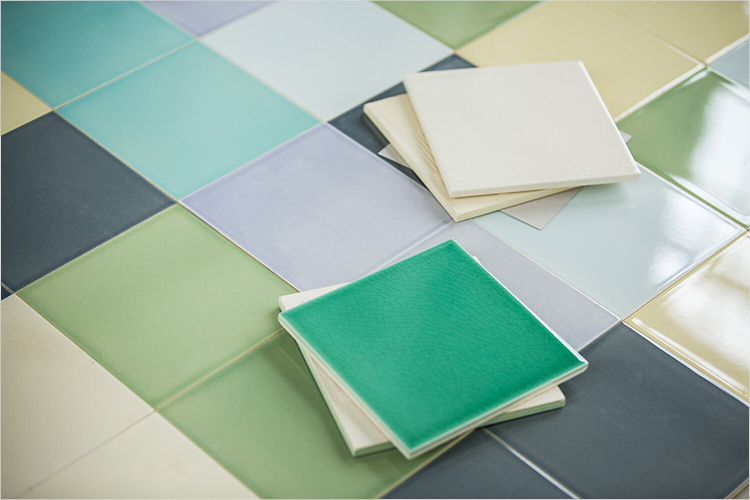Craquelé –
The fine glaze cracks
WHAT IS CRAQUELÉ?
Our tiles get their special brilliance and depth of colour on the one hand from the white stoneware body, and on the other hand from the fine glaze cracks typical of Art Nouveau, the so-called craquelé. Most of our glazes form the fine cracks that emphasise the transparency of the glaze. A glaze crazes when the coefficients of thermal expansion of the glaze and the ceramic are different. It occurs partly during cooling in the kiln, but also partly when the mortar is laid and sets. Craquelé does not reduce the durability of the tiles, because the glaze is firmly fused with the hard, dense substrate.

GLAZES
A glaze is a coating made of glass and consists of a mixture of mineral flours such as quartz, soda, lime and alumina as well as various metal oxides as colouring components or fluxes. The ultra-fine ground, dust-like powder is mixed with water to form a suspension that can be applied by airbrush – as with single-colour tiles – or with an enema-like tool. We have acquired the expertise for our extensive range by developing thousands of special glazes to complement historic tile panels. For each glaze, there is a fixed recipe that determines the ingredients and quantities, the firing temperature and duration, and the application quantity. Since the amount of glaze can vary minimally and each ceramist has their own signature, the result is vibrant surfaces with beautiful colour play both within the tile and within the batch. The glazes of the single-colour glazed wall tiles of the F 10 series can be applied to different formats as well as borders and skirting tiles.
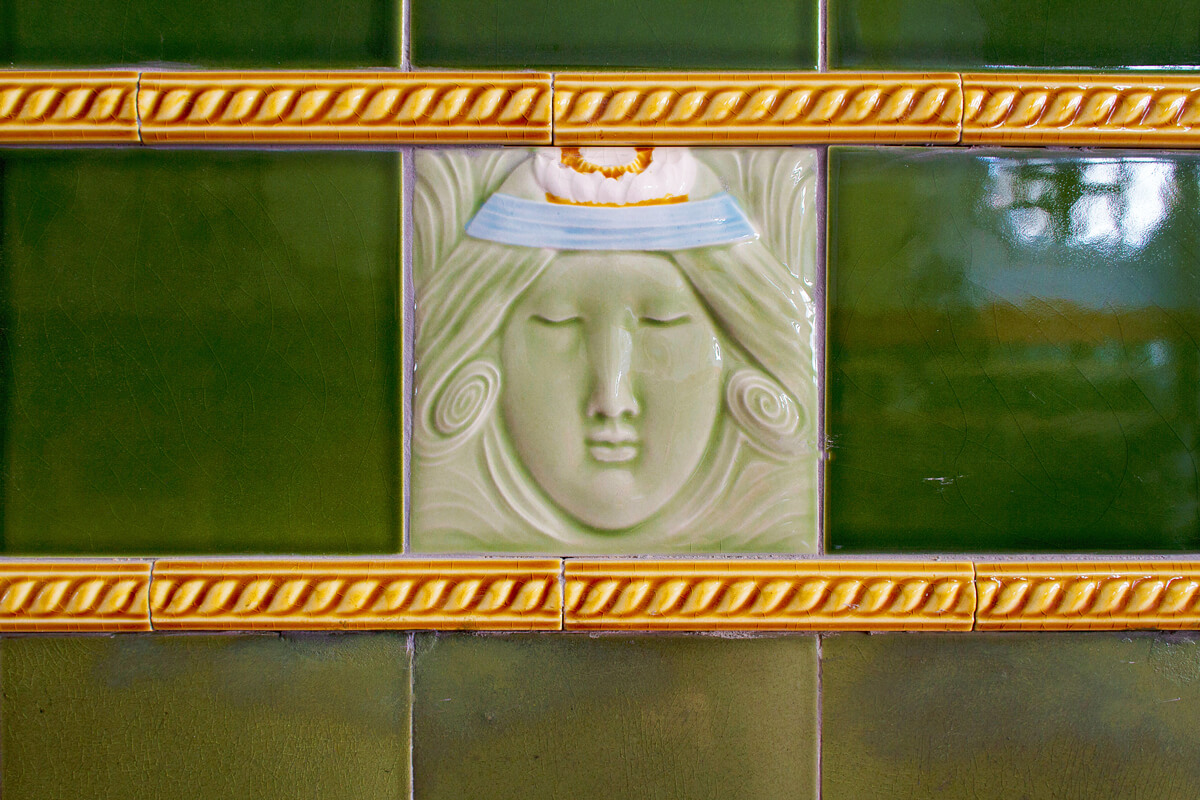
DEVELOPMENT
Due to temperature changes and varying humidity, the craquelé becomes finer and finer over time. The example on the left shows how the craquelé changes. The middle row consists of new tiles, here it is still coarse. In the lower original row of tiles, it has been growing for many years and has developed a very fine crack structure.
Craquelé formation on a new tile.
_
In terms of the durability of the tiles, craquelé is not a disadvantage .
_
Can be used without hesitation in wet areas, as lime-containing water will seal the cracks within 2-3 months without any visual change.
_
For use behind the cooker, we recommend impregnation for crackled tiles. You can find more information here.
CRAQUELÉ IN DECORATIVE TILES
Our decorative tiles also have the characteristic crackle structure. As the visibility of the craquelé depends on the glaze composition, it can only be prominent in certain places in multi-coloured decorative tiles. With single-colour decorative tiles, it behaves in the same way as with single-colour glazed wall tiles, as the same glazes are used here.
CRAQUELÉ WITH BRILLIANT TILES
Brilliant tiles captivate with their transparent glazes with intense, particularly pronounced craquelé and strong play of colour.


